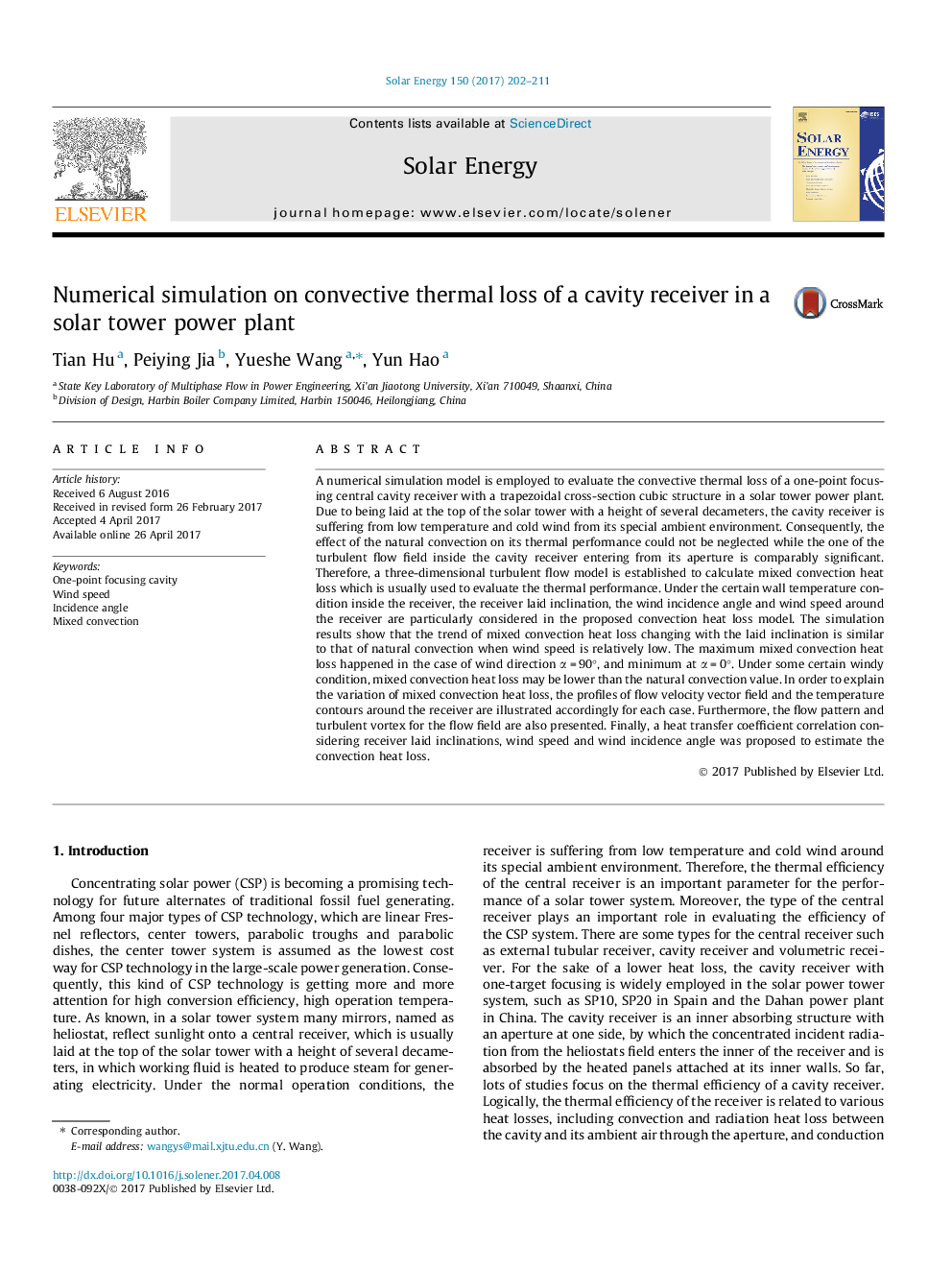| کد مقاله | کد نشریه | سال انتشار | مقاله انگلیسی | نسخه تمام متن |
|---|---|---|---|---|
| 5450790 | 1513068 | 2017 | 10 صفحه PDF | دانلود رایگان |
عنوان انگلیسی مقاله ISI
Numerical simulation on convective thermal loss of a cavity receiver in a solar tower power plant
ترجمه فارسی عنوان
شبیه سازی عددی در از دست دادن حرارت متناوب یک گیرنده حفره در نیروگاه خورشیدی
دانلود مقاله + سفارش ترجمه
دانلود مقاله ISI انگلیسی
رایگان برای ایرانیان
کلمات کلیدی
یک نقطه تمرکز حفره، سرعت باد، زاویه بروز، مخلوط مخلوط،
موضوعات مرتبط
مهندسی و علوم پایه
مهندسی انرژی
انرژی های تجدید پذیر، توسعه پایدار و محیط زیست
چکیده انگلیسی
A numerical simulation model is employed to evaluate the convective thermal loss of a one-point focusing central cavity receiver with a trapezoidal cross-section cubic structure in a solar tower power plant. Due to being laid at the top of the solar tower with a height of several decameters, the cavity receiver is suffering from low temperature and cold wind from its special ambient environment. Consequently, the effect of the natural convection on its thermal performance could not be neglected while the one of the turbulent flow field inside the cavity receiver entering from its aperture is comparably significant. Therefore, a three-dimensional turbulent flow model is established to calculate mixed convection heat loss which is usually used to evaluate the thermal performance. Under the certain wall temperature condition inside the receiver, the receiver laid inclination, the wind incidence angle and wind speed around the receiver are particularly considered in the proposed convection heat loss model. The simulation results show that the trend of mixed convection heat loss changing with the laid inclination is similar to that of natural convection when wind speed is relatively low. The maximum mixed convection heat loss happened in the case of wind direction α = 90°, and minimum at α = 0°. Under some certain windy condition, mixed convection heat loss may be lower than the natural convection value. In order to explain the variation of mixed convection heat loss, the profiles of flow velocity vector field and the temperature contours around the receiver are illustrated accordingly for each case. Furthermore, the flow pattern and turbulent vortex for the flow field are also presented. Finally, a heat transfer coefficient correlation considering receiver laid inclinations, wind speed and wind incidence angle was proposed to estimate the convection heat loss.
ناشر
Database: Elsevier - ScienceDirect (ساینس دایرکت)
Journal: Solar Energy - Volume 150, 1 July 2017, Pages 202-211
Journal: Solar Energy - Volume 150, 1 July 2017, Pages 202-211
نویسندگان
Tian Hu, Peiying Jia, Yueshe Wang, Yun Hao,
